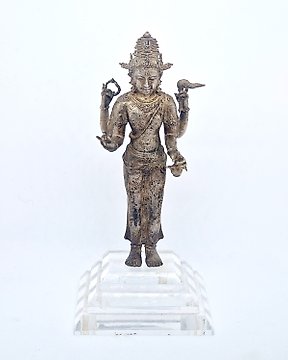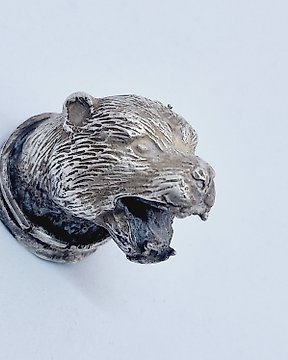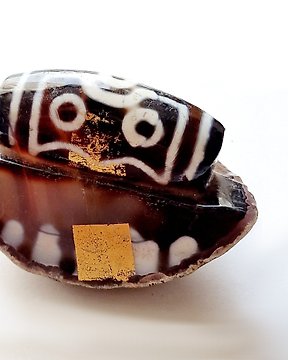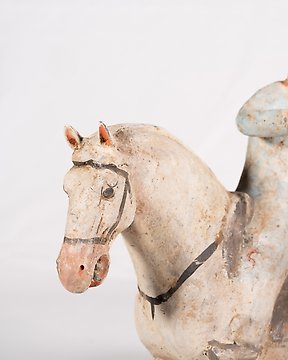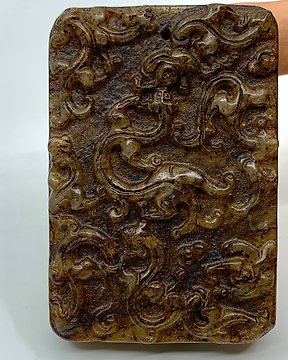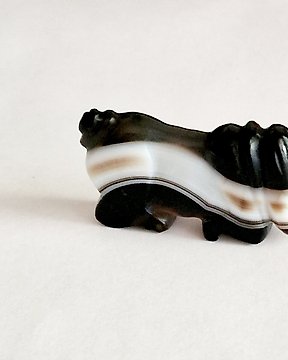Thank you for this nice bead!
Visualizza traduzioneSogdiana, cultura della Via della Seta Argento Coppa rituale con palma di stambecco e fiori - 140 mm
N. 85021261
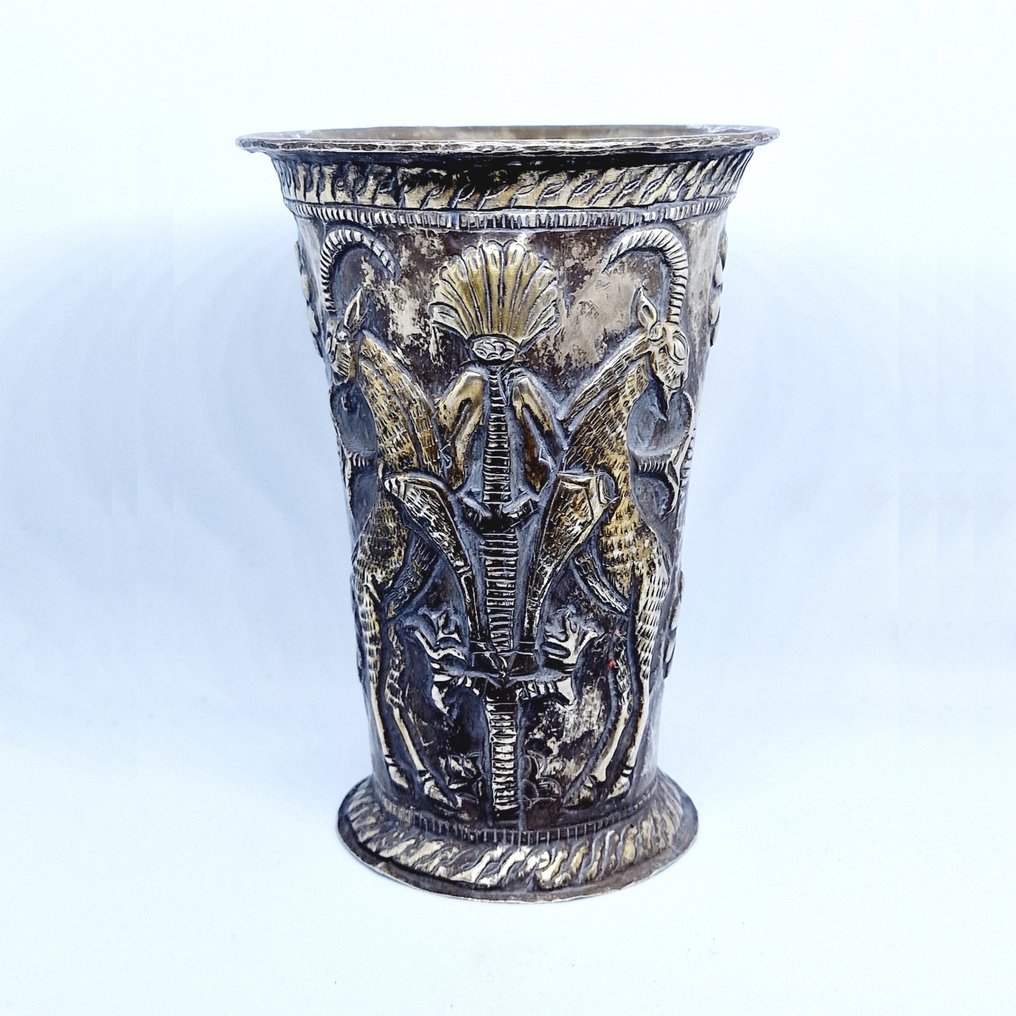
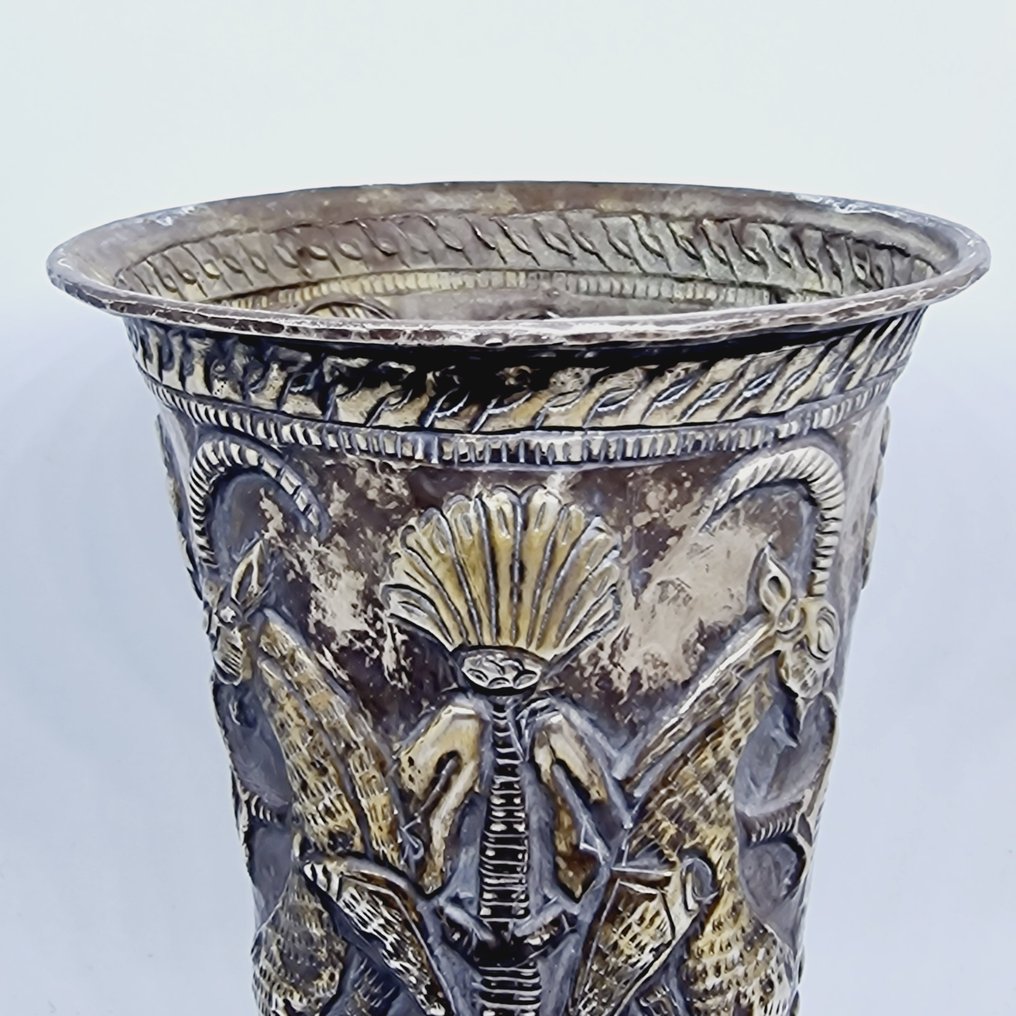
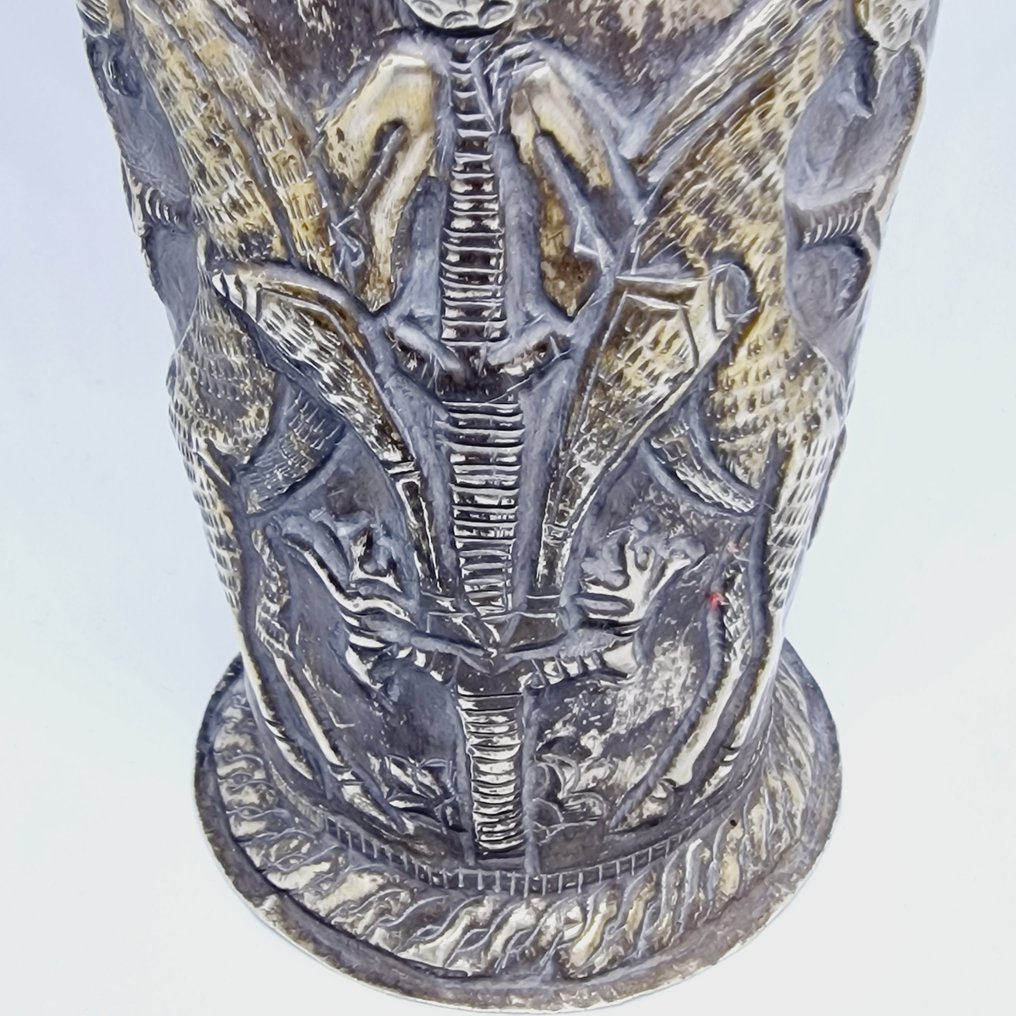
A rare gilded silver ritual cup with two standing ibexes with palm tree and flowers decor in the centre from the ancient Persian, Sogdian , Silk Road culture.
1st Millennium AD.
In good condition. It has been cleaned by hand, but the nice antique patina is preserved. Original, ancient, hand silversmith work. Traces of use and age on its surface.
Purchased mid 90's in Paris by Dr. Zelnik on the local art market.
About the Sogdian Culture :
Sogdian culture refers to the ancient culture of the Sogdians, an Iranian people who inhabited the region of Sogdiana, located in present-day Uzbekistan, Tajikistan, and parts of Kazakhstan and Turkmenistan. The Sogdians were renowned traders, diplomats, and artisans along the ancient Silk Road, playing a significant role in the cultural and economic exchanges between East and West.
Their culture was diverse and multifaceted:
Trade and Commerce: Sogdians were known for their expertise in trade and commerce. They established extensive trade networks that connected China, Central Asia, the Middle East, and Europe. Their strategic location along the Silk Road contributed significantly to their wealth and influence.
Language and Writing: The Sogdians had their own language, which was an Eastern Iranian language closely related to Persian. They had a script, which was an adaptation of the Aramaic script. Sogdian merchants used their language as a lingua franca in their trade interactions.
Art and Craftsmanship: Sogdian artisans were skilled in various crafts, including pottery, metalwork, and textiles. Their artistic expressions often incorporated elements from various cultures they encountered along the trade routes, resulting in a unique blend of styles.
Religion and Beliefs: Initially following Zoroastrianism, the Sogdians later adopted Buddhism and Manichaeism. They were known for their religious tolerance and the syncretic nature of their beliefs, which incorporated elements from various faiths.
Urban Centers: Sogdian cities, like Samarkand and Bukhara, were thriving urban centers along the Silk Road. These cities were hubs of cultural exchange, commerce, and learning.
Architecture: Sogdian architecture often reflected influences from different cultures, displaying a mix of Persian, Greek, and Central Asian styles.
The Sogdians played a crucial role as intermediaries, facilitating the exchange of goods, ideas, and cultures between the East and West during ancient times.
see also the link : https://sogdians.si.edu/introduction/
Important information :
The seller guarantees that he is entitled to ship this lot. Due to the complicated Cultural Laws we will not be able to ship this item outside of the EU nor to the United States.
Provenance :
This item comes from the collection of Dr. István Zelnik, resulting from more than 50 years of collecting.
Former diplomat, Asian Art collector, Researcher.
Publications :
More than 20 essays on Southeast Asian politics and economy.
Co-author of 10 albums and books on Southeast Asian Art.
A rare gilded silver ritual cup with two standing ibexes with palm tree and flowers decor in the centre from the ancient Persian, Sogdian , Silk Road culture.
1st Millennium AD.
In good condition. It has been cleaned by hand, but the nice antique patina is preserved. Original, ancient, hand silversmith work. Traces of use and age on its surface.
Purchased mid 90's in Paris by Dr. Zelnik on the local art market.
About the Sogdian Culture :
Sogdian culture refers to the ancient culture of the Sogdians, an Iranian people who inhabited the region of Sogdiana, located in present-day Uzbekistan, Tajikistan, and parts of Kazakhstan and Turkmenistan. The Sogdians were renowned traders, diplomats, and artisans along the ancient Silk Road, playing a significant role in the cultural and economic exchanges between East and West.
Their culture was diverse and multifaceted:
Trade and Commerce: Sogdians were known for their expertise in trade and commerce. They established extensive trade networks that connected China, Central Asia, the Middle East, and Europe. Their strategic location along the Silk Road contributed significantly to their wealth and influence.
Language and Writing: The Sogdians had their own language, which was an Eastern Iranian language closely related to Persian. They had a script, which was an adaptation of the Aramaic script. Sogdian merchants used their language as a lingua franca in their trade interactions.
Art and Craftsmanship: Sogdian artisans were skilled in various crafts, including pottery, metalwork, and textiles. Their artistic expressions often incorporated elements from various cultures they encountered along the trade routes, resulting in a unique blend of styles.
Religion and Beliefs: Initially following Zoroastrianism, the Sogdians later adopted Buddhism and Manichaeism. They were known for their religious tolerance and the syncretic nature of their beliefs, which incorporated elements from various faiths.
Urban Centers: Sogdian cities, like Samarkand and Bukhara, were thriving urban centers along the Silk Road. These cities were hubs of cultural exchange, commerce, and learning.
Architecture: Sogdian architecture often reflected influences from different cultures, displaying a mix of Persian, Greek, and Central Asian styles.
The Sogdians played a crucial role as intermediaries, facilitating the exchange of goods, ideas, and cultures between the East and West during ancient times.
see also the link : https://sogdians.si.edu/introduction/
Important information :
The seller guarantees that he is entitled to ship this lot. Due to the complicated Cultural Laws we will not be able to ship this item outside of the EU nor to the United States.
Provenance :
This item comes from the collection of Dr. István Zelnik, resulting from more than 50 years of collecting.
Former diplomat, Asian Art collector, Researcher.
Publications :
More than 20 essays on Southeast Asian politics and economy.
Co-author of 10 albums and books on Southeast Asian Art.
- 485
- 4
- 6
Thank you for this nice bead!
Visualizza traduzioneThank you for this nice bead!
Visualizza traduzioneThank you for these very nice beads!
Visualizza traduzioneThank you for these nice beads!
Visualizza traduzioneThank you for this nice bead!
Visualizza traduzioneThank you for this nice bead!
Visualizza traduzioneThank you for these nice beads!
Visualizza traduzioneThank you for these nice beads!
Visualizza traduzioneThank you for this very nice deity bead!
Visualizza traduzioneThank you for this nice beads!
Visualizza traduzioneThank you for this nice bead!
Visualizza traduzioneThank you for this wonderful Buddha!
Visualizza traduzioneThank you for this wonderful Buddha!
Visualizza traduzioneThank you for this very nice tiger!
Visualizza traduzioneThank you for this very nice bead!
Visualizza traduzioneThank you for this very nice fish!
Visualizza traduzioneThank you for this very nice deity!
Visualizza traduzioneThank you for this very nice bead!
Visualizza traduzioneThank you for these very nice beads!
Visualizza traduzioneThank you for this very nice necklace!
Visualizza traduzioneThank you for this very nice necklace!
Visualizza traduzioneThank you for this very nice necklace!
Visualizza traduzioneThank you for this very nice necklace!
Visualizza traduzioneThank you for this very nice ring!
Visualizza traduzioneDisclaimer
Il venditore garantisce e può provare che l’oggetto è stato ottenuto legalmente. Il venditore è stato informato da Catawiki di dover fornire la documentazione richiesta dalle leggi e dai regolamenti del suo Paese di residenza. Il venditore garantisce ed è autorizzato a vendere/esportare questo oggetto. Il venditore fornirà all’acquirente tutte le informazioni di provenienza note sull’oggetto. Il venditore garantisce che tutti i permessi necessari sono/saranno predisposti. Il venditore informerà immediatamente l’acquirente di eventuali ritardi nel rilascio di tali permessi.
Il venditore garantisce e può provare che l’oggetto è stato ottenuto legalmente. Il venditore è stato informato da Catawiki di dover fornire la documentazione richiesta dalle leggi e dai regolamenti del suo Paese di residenza. Il venditore garantisce ed è autorizzato a vendere/esportare questo oggetto. Il venditore fornirà all’acquirente tutte le informazioni di provenienza note sull’oggetto. Il venditore garantisce che tutti i permessi necessari sono/saranno predisposti. Il venditore informerà immediatamente l’acquirente di eventuali ritardi nel rilascio di tali permessi.
